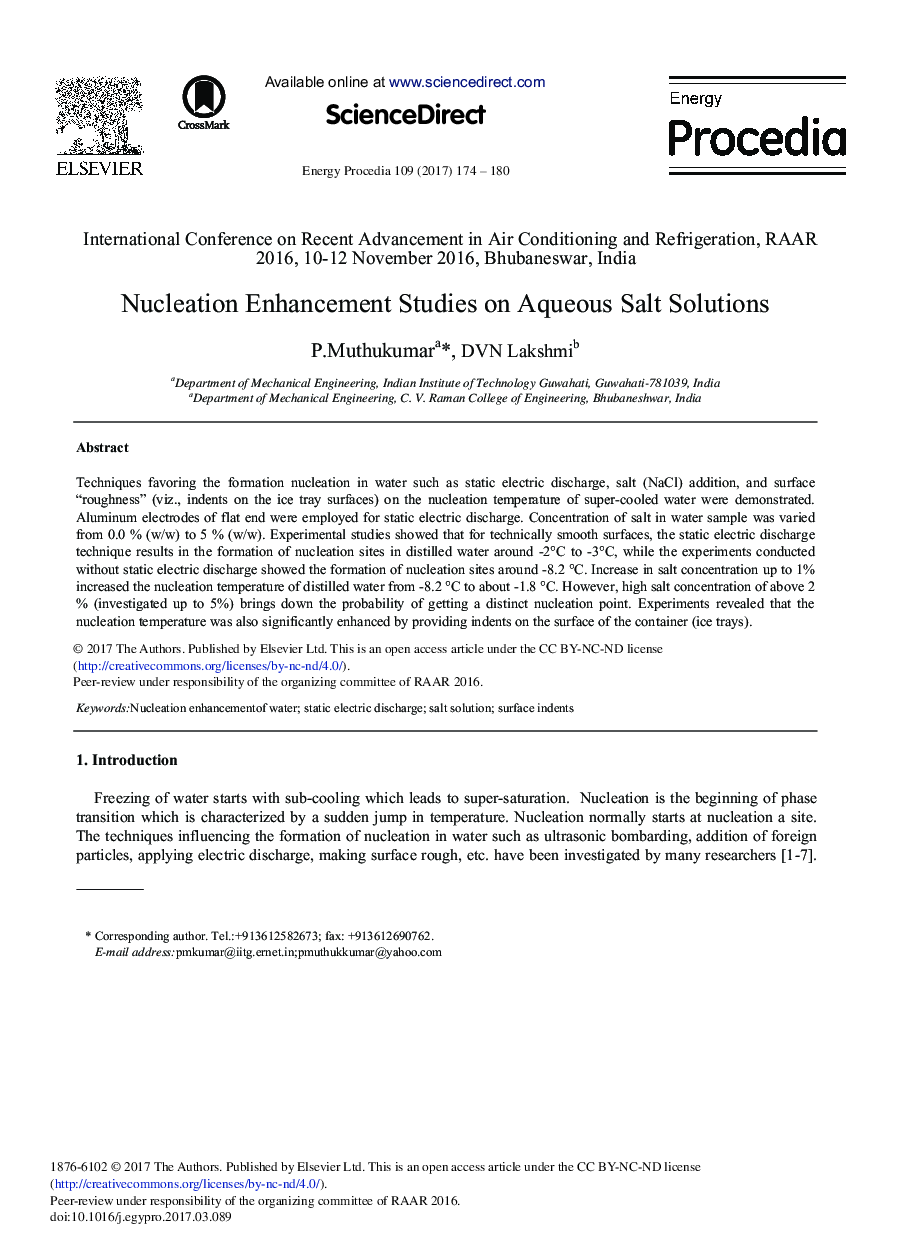| Article ID | Journal | Published Year | Pages | File Type |
|---|---|---|---|---|
| 5446005 | Energy Procedia | 2017 | 7 Pages |
Abstract
Techniques favoring the formation nucleation in water such as static electric discharge, salt (NaCl) addition, and surface “roughness” (viz., indents on the ice tray surfaces) on the nucleation temperature of super-cooled water were demonstrated. Aluminum electrodes of flat end were employed for static electric discharge. Concentration of salt in water sample was varied from 0.0% (w/w) to 5% (w/w). Experimental studies showed that for technically smooth surfaces, the static electric discharge technique results in the formation of nucleation sites in distilled water around -2 °C to -3 °C, while the experiments conducted without static electric discharge showed the formation of nucleation sites around -8.2 °C. Increase in salt concentration up to 1% increased the nucleation temperature of distilled water from -8.2 °C to about -1.8 °C. However, high salt concentration of above 2% (investigated up to 5%) brings down the probability of getting a distinct nucleation point. Experiments revealed that the nucleation temperature was also significantly enhanced by providing indents on the surface of the container (ice trays).
Keywords
Related Topics
Physical Sciences and Engineering
Energy
Energy (General)
Authors
P. Muthukumar, D.V.N. Lakshmi,
